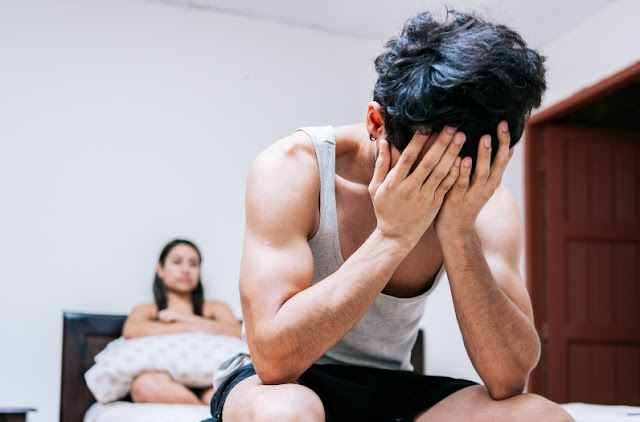What are the serious side effects of finasteride?
Finasteride is a medication primarily used to treat benign prostatic hyperplasia (enlarged prostate) and male pattern baldness (androgenetic alopecia).Like any medication, it can have potential side effects. Not everyone will experience these side effects, and they can vary in severity. Some of the common side effects of finasteride include:
Decreased Libido
Some individuals might experience a reduced interest in sex
Erectile Dysfunction (ED)
Some users might have difficulty achieving or maintaining an erection.
Ejaculation Disorders
This can involve decreased ejaculatory volume or changes in the sensation of ejaculation.
Breast Enlargement and Tenderness
Some individuals might experience breast enlargement and tenderness. This is due to the effect of finasteride on the balance of hormones in the body.
Allergic Reactions
In rare cases, individuals might experience allergic reactions, which can include rash, itching, swelling, severe dizziness, and difficulty breathing.
Depression
Some individuals have reported experiencing depressive symptoms while taking finasteride.
Testicular Pain
Some men might experience pain in the testicles.
Prostate Cancer
Finasteride can lower levels of prostate-specific antigen (PSA), a marker that's used to screen for prostate cancer. This might lead to delayed detection of prostate cancer in some cases.
It's important to note that many of the severe side effects only occur in the minority of users. Most people who take finasteride do not experience significant side effects.
If you are considering using finasteride, it's essential to consult a healthcare professional before starting the medication. They can provide personalised advice based on your medical history, current health status, and any potential interactions with other medications you might be taking.
It's important to note that many of the severe side effects only occur in the minority of users. Most people who take finasteride do not experience significant side effects.
If you are considering using finasteride, it's essential to consult a healthcare professional before starting the medication. They can provide personalised advice based on your medical history, current health status, and any potential interactions with other medications you might be taking.
If you experience any unusual or severe side effects while taking finasteride, you should contact your healthcare provider promptly.
How to reduce finasteride side-effects
If you're experiencing side effects from finasteride or are concerned about the possibility of side effects, there are several steps you can take to help mitigate them.However, it's important to note that the effectiveness of these strategies can vary from person to person. Always consult with your healthcare provider before making any changes to your medication regimen.
Here are some tips that might help:
Discuss with Your Doctor
If you're experiencing side effects, the first step is to talk to your healthcare provider. They can assess your situation and determine whether the side effects are indeed caused by finasteride or if there might be other factors involved.
Dosage Adjustment
Your doctor might consider adjusting the dosage of finasteride to see if a lower dose reduces the side effects while still maintaining its therapeutic benefits.
Take a Break
Your doctor might suggest taking a short break from finasteride to see if the side effects improve. This can help determine whether the medication is the cause of the issues you're experiencing.
Alternative Medications
Depending on your condition and goals, your doctor might recommend alternative treatments that have a lower risk of causing the side effects you're concerned about.
Combination Therapy
In some cases, using finasteride in combination with another medication or treatment might help alleviate side effects while still achieving the desired therapeutic outcomes.
Lifestyle Changes
Certain lifestyle changes can help mitigate some of the side effects. For example: Regular exercise and a healthy diet can improve overall well-being and potentially counteract some sexual side effects.
Stress management techniques, such as meditation or yoga, might help alleviate symptoms of depression or anxiety
Stress management techniques, such as meditation or yoga, might help alleviate symptoms of depression or anxiety
Supplements
Some individuals have reported success in using certain supplements to counteract finasteride side effects. However, it's important to discuss any supplements with your doctor before trying them.
Monitor and Report
Keep track of your symptoms and their severity. If you notice any changes, report them to your doctor. This information can help your doctor make informed decisions about your treatment plan.
Patience
Some side effects might diminish or disappear over time as your body adjusts to the medication. It's worth giving your body a chance to adapt before making drastic changes.
Seek Specialist Help
Depending on the specific side effects you're experiencing, you might benefit from consulting specialists such as urologists, endocrinologists, or mental health professionals.
Remember that each person's response to medications can vary, and there's no one-size-fits-all solution. Your healthcare provider will work with you to find the best approach based on your individual circumstances.
Remember that each person's response to medications can vary, and there's no one-size-fits-all solution. Your healthcare provider will work with you to find the best approach based on your individual circumstances.
Alternative treatments to finasteride
If you're seeking an alternative to finasteride for the treatment of conditions like benign prostatic hyperplasia (BPH) or male pattern baldness, there are a few options available that you can discuss with your healthcare provider.
Keep in mind that the suitability of these alternatives depends on your specific medical history, health status, and treatment goals. Here are some alternatives to consider:
Dutasteride
Dutasteride is a medication similar to finasteride and is often used to treat BPH and male pattern baldness. It works by inhibiting the production of dihydrotestosterone (DHT), a hormone associated with both conditions. Dutasteride can be more potent than finasteride but might also have a different side effect profile.
Topical Minoxidil
Minoxidil is a topical solution that is commonly used to treat male pattern baldness. It works by promoting hair growth and increasing blood flow to hair follicles. Minoxidil does not affect hormones like finasteride or dutasteride, so it may be considered a safer option for those concerned about hormonal side effects.
Lifestyle Changes
For some individuals with mild cases of BPH or hair loss, lifestyle changes can help alleviate symptoms or slow down hair loss progression. These changes may include maintaining a healthy diet, exercising regularly, managing stress, and avoiding tobacco and excessive alcohol consumption.
Saw Palmetto
Saw palmetto is a herbal supplement that some people use to manage BPH symptoms. It's thought to have natural anti-inflammatory properties that might help reduce the size of the prostate. However, the scientific evidence supporting its efficacy is limited, and its use should be discussed with a healthcare provider.
Alpha-Blockers
Alpha-blockers are a class of medications used to treat BPH by relaxing the muscles in the prostate and bladder neck. Examples include tamsulosin, doxazosin, and alfuzosin. They can help relieve urinary symptoms associated with BPH.
HR23+®
HR23+® is a safe and highly effective, non-medical hair growth capsule that can help prevent excessive hair loss, and support the function of healthy hair growth in men and women. HR23+® is an ideal finasteride alternative because there is no risk of negative side-effects, and it is also shown to be effective for stumping hair loss.
Summary
It's important to note that while these alternatives may offer different approaches to treatment, they also have their own set of potential benefits and risks.
Before making any decisions, it's crucial to have a thorough discussion with your healthcare provider. They can help you understand the potential benefits and risks of each option and help you make an informed choice that aligns with your health goals and preferences.


Comments
Post a Comment